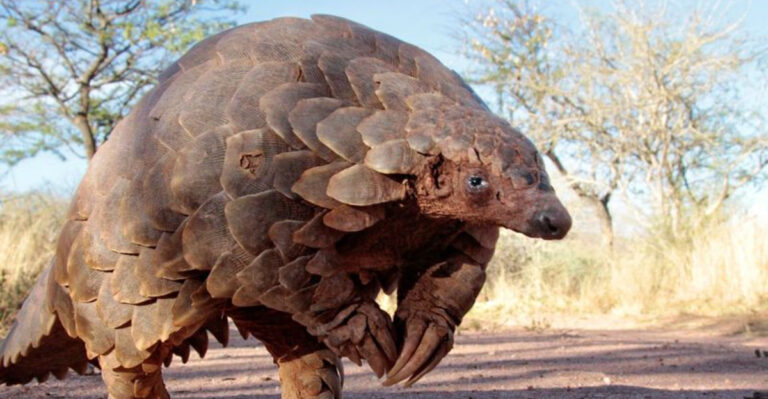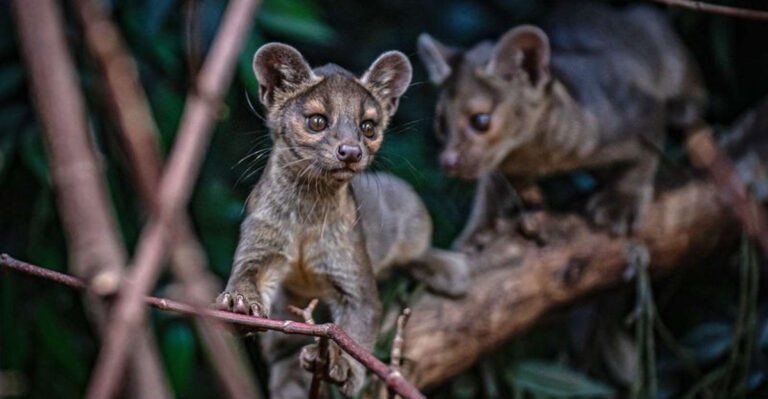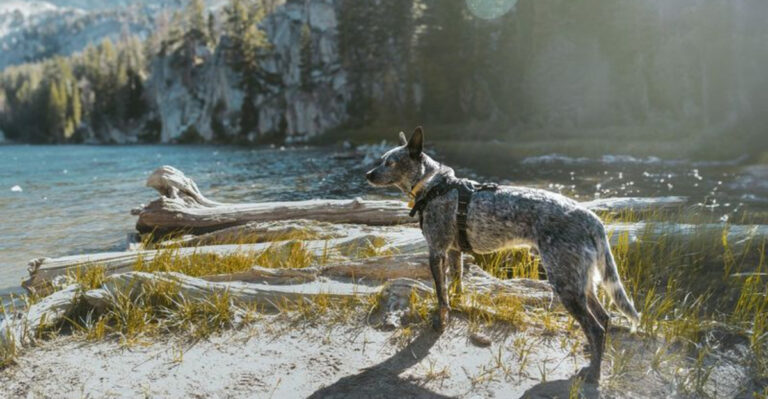15 Iowa Snakes – Which Are Venomous?
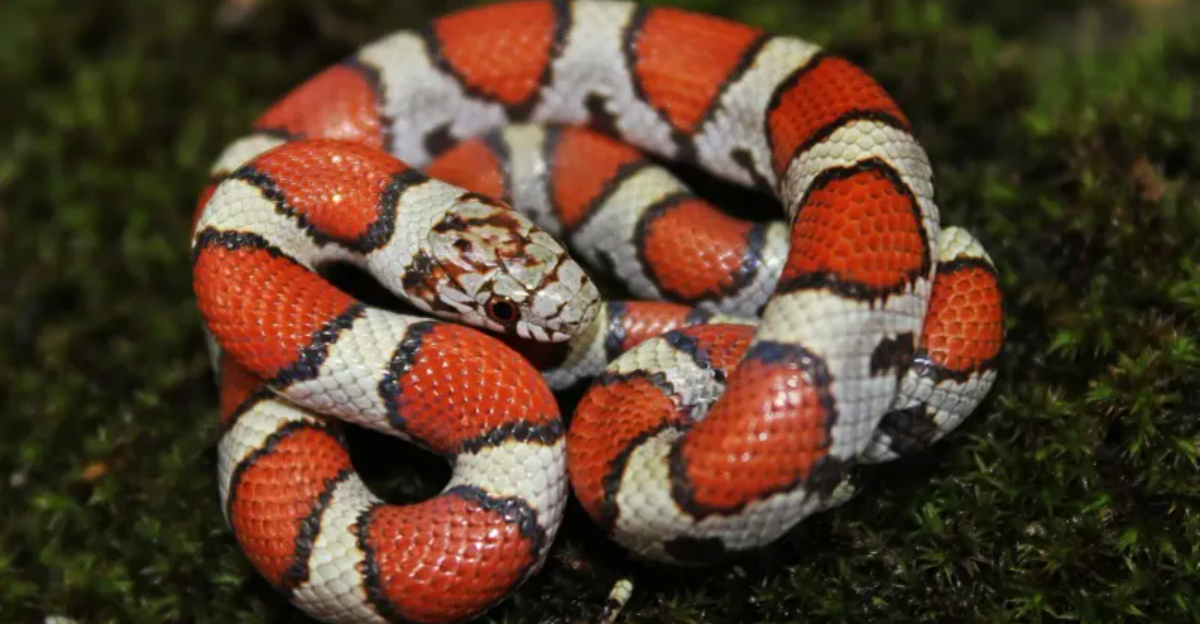
Iowa’s grasslands and forests hide a fascinating collection of slithering creatures. From harmless garden helpers to venomous species that demand respect, the Hawkeye State hosts a diverse snake population.
Knowing which snakes pose danger and which are beneficial can help you appreciate these remarkable reptiles while staying safe during outdoor adventures.
1. The Silent Hunter: Prairie Rattlesnake

Sporting a rattle that mimics the sound of dry leaves, this venomous pit viper favors Iowa’s rocky bluffs. A broad, diamond-shaped head and heat-sensing pits between the eyes and nostrils help set it apart.
Prairie rattlers deliver a strong hemotoxic venom that demands quick medical care. Though once more widespread, they’re now rare in Iowa due to shrinking natural habitat.
2. Copper-Topped Trouble: Massasauga Rattlesnake

Once abundant in Iowa’s wetlands, this stubby venomous rattler now clings to existence in just a few counties. Smaller than its prairie cousin, the massasauga rarely exceeds 30 inches.
Their distinctive copper-colored head contrasts with gray-brown bodies marked by dark blotches. Though venomous, they’re typically shy and quick to retreat rather than strike.
3. Undercover Danger: Timber Rattlesnake
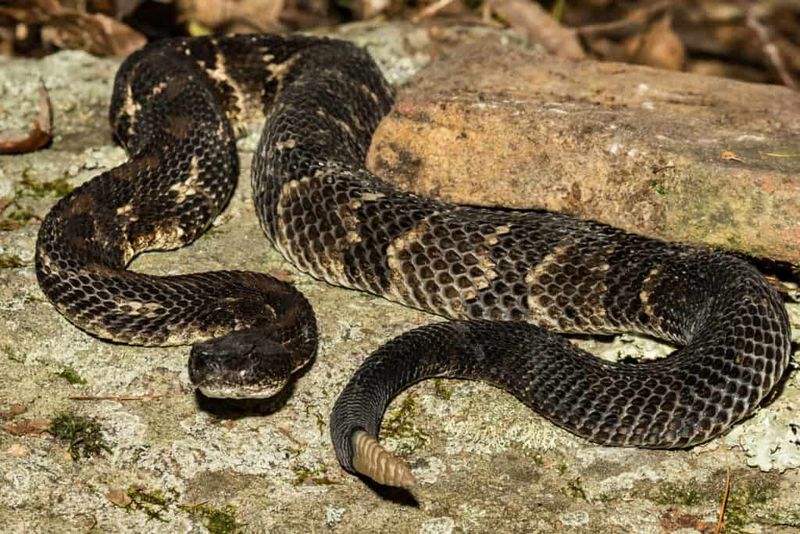
Masters of camouflage, timber rattlers blend perfectly with forest floors in eastern Iowa. Their chocolate-brown bodies with jagged black bands create a leaf-litter disguise that hikers often miss until it’s too late.
Despite packing serious venom, they’re surprisingly docile. These rattlers typically warn with loud buzzes before striking, giving you precious seconds to back away.
4. Copperhead Confusion: Northern Water Snake
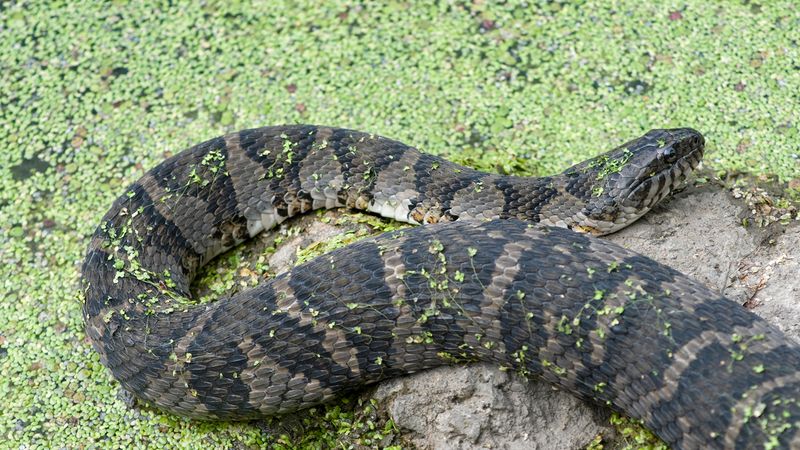
Often mistaken for venomous copperheads (which don’t actually live in Iowa), these water-loving reptiles suffer needless persecution. Their reddish-brown crossbands on darker bodies create an unfortunate resemblance to their dangerous cousins.
While they’ll bite defensively if cornered, northern water snakes are completely harmless to humans. You’ll spot them basking on rocks near rivers and lakes throughout the state.
5. Yellow-Bellied Swimmer: Plain-Bellied Water Snake
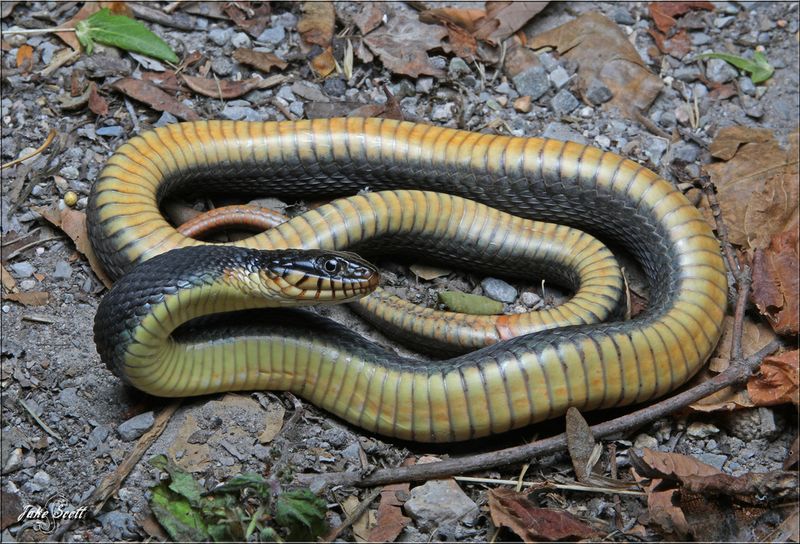
Flashing a bright yellow underbelly when threatened, this aquatic reptile puts on quite a show. Their solid-colored backs range from olive to brown to nearly black, lacking the distinctive bands of their northern cousins.
Though non-venomous, they’re feisty defenders with sharp teeth and musky secretions. Found primarily in southeastern Iowa’s backwaters and marshes, they feast on frogs and small fish.
6. Roadside Racer: Blue Racer
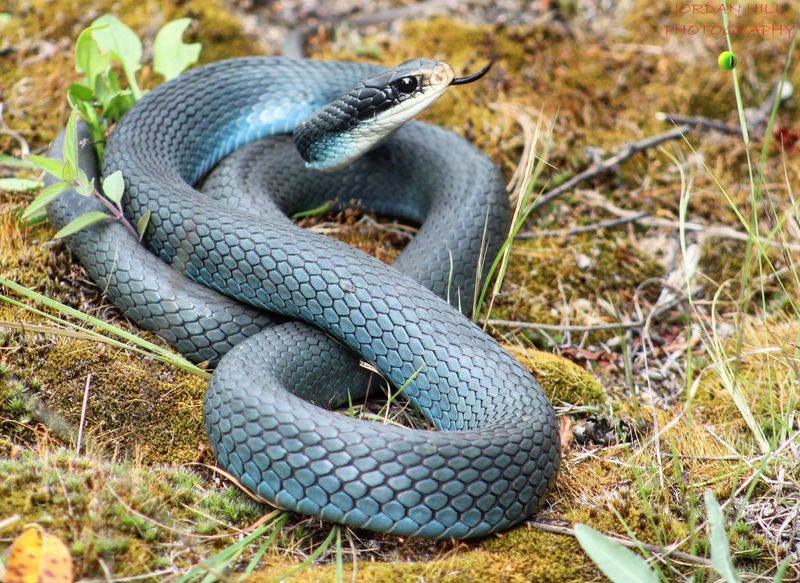
Blink and you’ll miss these speedsters zooming through prairie grasses at up to 4 mph! Adults showcase a stunning steel-blue to olive-gray coloration that shimmers in sunlight.
Despite their intimidating size (up to 6 feet) and aggressive defensive displays, blue racers are harmless to humans. They’re beneficial predators, controlling rodent populations across central and western Iowa’s open habitats.
7. Garden Guardian: Common Garter Snake
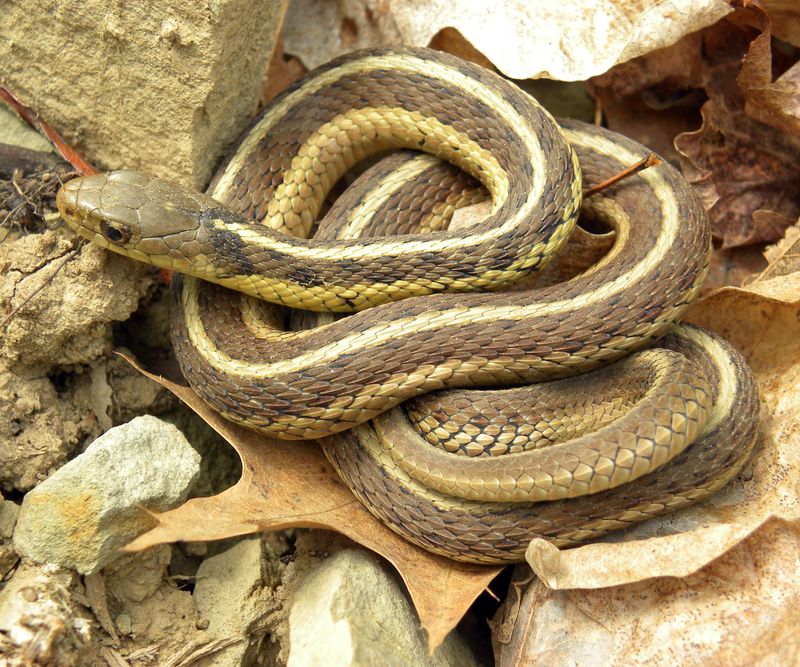
Sporting three yellow stripes running down olive, brown, or black bodies, these backyard buddies are Iowa’s most familiar reptiles. Garden-lovers should welcome these slug-munching allies that keep pest populations in check.
While technically mildly venomous, their toxin is harmless to humans – equivalent to a mild bee sting. Found statewide, they’re the snake most likely to surprise you while gardening.
8. Milk Snake Mimicry: Red Milk Snake
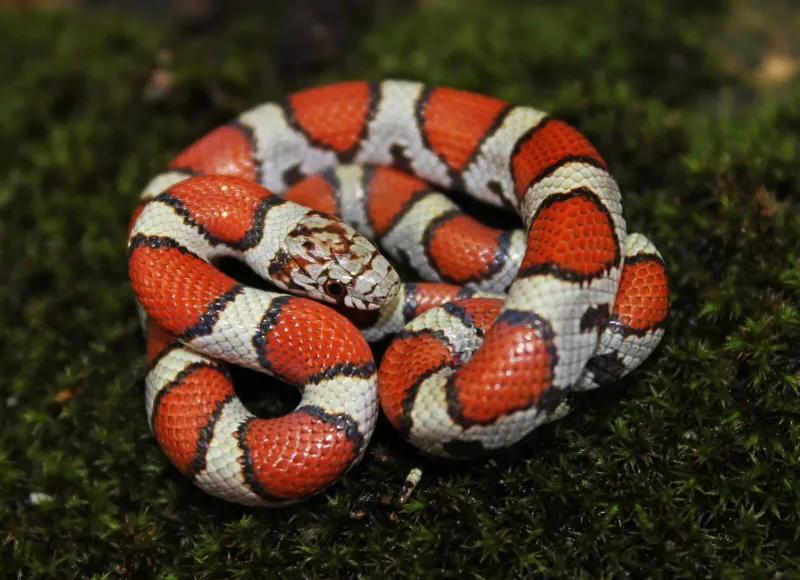
Wearing vibrant red, black, and cream bands, these harmless beauties evolved to mimic venomous coral snakes – though no coral snakes live anywhere near Iowa!
Secretive and rarely seen, milk snakes hunt at night in woodlands across eastern Iowa. They’re completely harmless despite their warning coloration.
9. Flathead Impersonator: Plains Hognose Snake
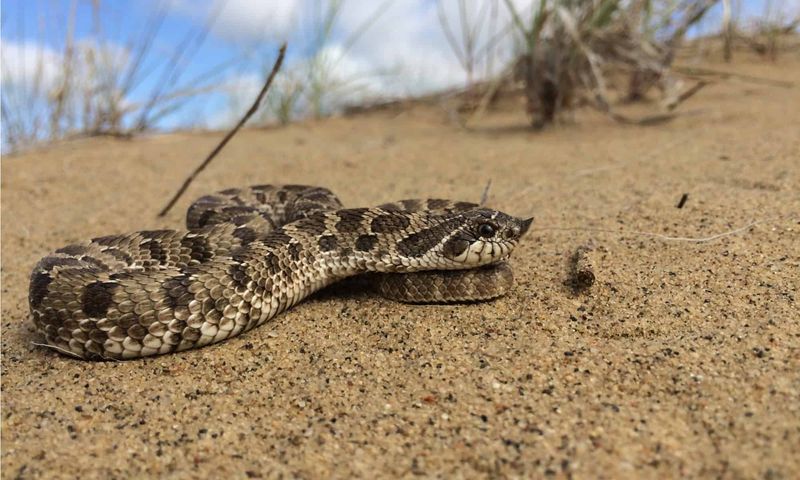
With an upturned snout like a tiny shovel, these drama queens put on Oscar-worthy performances when threatened. They flatten their heads like cobras, hiss loudly, and even roll onto their backs with tongues hanging out.
Despite all the theatrics, hognose snakes are completely harmless to humans. Their unique snouts are perfect for digging up toads in the sandy soils of western Iowa.
10. Woodland Climber: Western Fox Snake

Copper-headed with bold brown blotches, fox snakes are often mistaken for copperheads by nervous hikers. They release a musky fox-like scent when handled – hence their unique name.
These powerful constrictors can climb trees with surprising agility. Non-venomous and beneficial, they’re found throughout Iowa’s woodlands and farm fields, controlling rodent populations that damage crops.
11. Nocturnal Hunter: Bullsnake
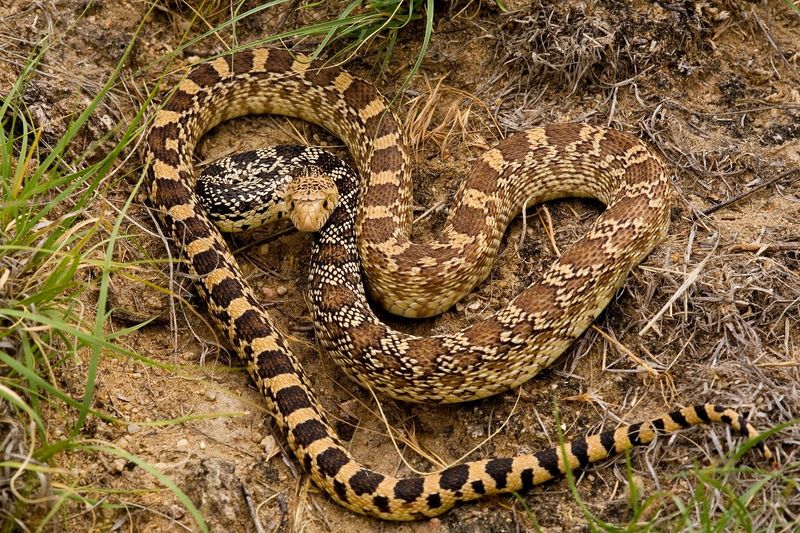
Growing up to six feet long, these impressive constrictors are farmers’ best friends. A single bullsnake can consume dozens of crop-destroying rodents each season, providing natural pest control across Iowa’s agricultural landscapes.
Their yellow bodies with dark brown blotches resemble rattlesnakes, and they even mimic rattler behavior by flattening their heads and vibrating their tails! Despite the intimidating act, they’re completely harmless.
12. Tiny Tunneler: Prairie Ring-Necked Snake
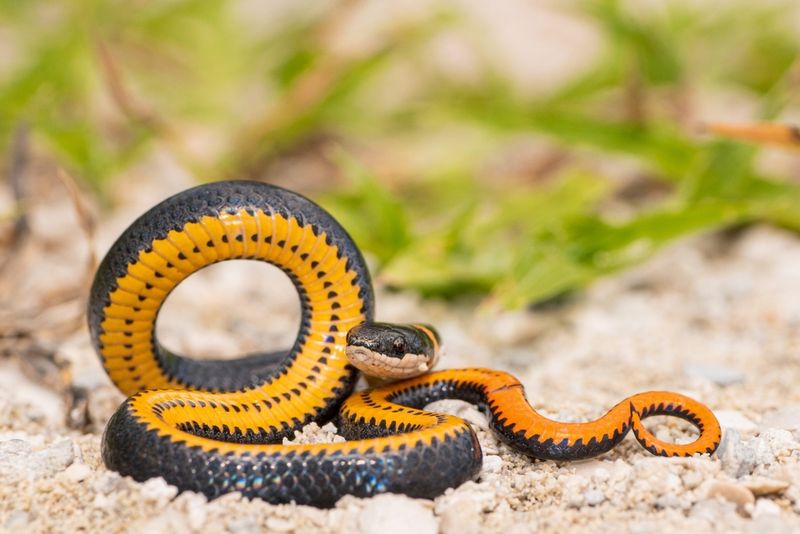
No bigger than a pencil, these diminutive reptiles sport a distinctive yellow-orange collar behind their heads. Flip a log in eastern Iowa’s woodlands, and you might glimpse their brilliant red-orange belly flash.
Though technically venomous, their tiny rear fangs and mild venom only affect salamanders and worms. Humans have nothing to fear from these secretive, beneficial creatures that spend most of their lives underground.
13. Smooth Operator: Smooth Green Snake
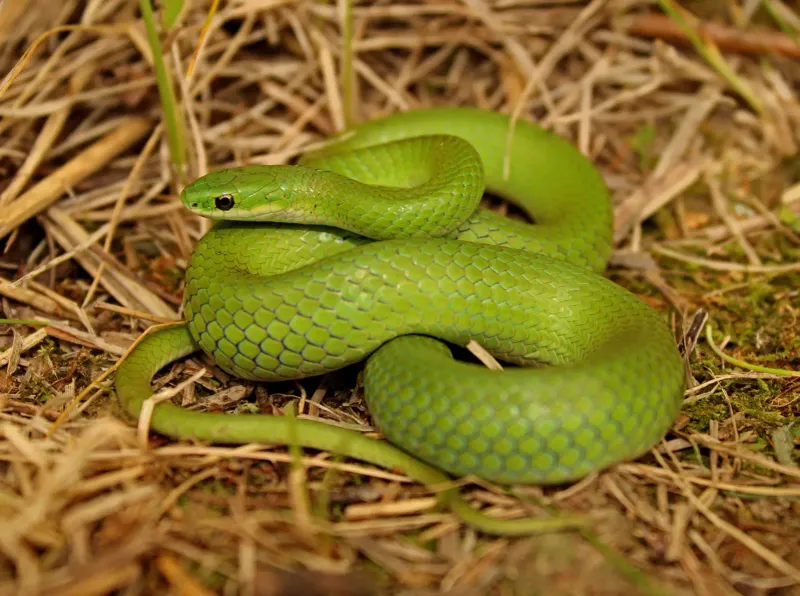
Grass-green and slender as a shoelace, these gentle insect-eaters practically disappear in summer meadows. Their brilliant coloration can change after life ends, often confusing curious hikers.
Increasingly rare across Iowa due to pesticide use, smooth green snakes are completely harmless. They’re actually helpful, dining on grasshoppers and crickets that harm crops and gardens.
14. Ribbon of Color: Plains Garter Snake

Featuring an orange or yellow stripe down their backs flanked by two lighter stripes, these relatives of common garters add a splash of color to Iowa’s prairies. Their checkered pattern between stripes distinguishes them from common garter snakes.
Found primarily in western Iowa’s grasslands, they’re slightly more aquatic than their common cousins. Like all garters, they possess mild venom that poses zero threat to humans.
15. Patterned Prowler: Graham’s Crayfish Snake
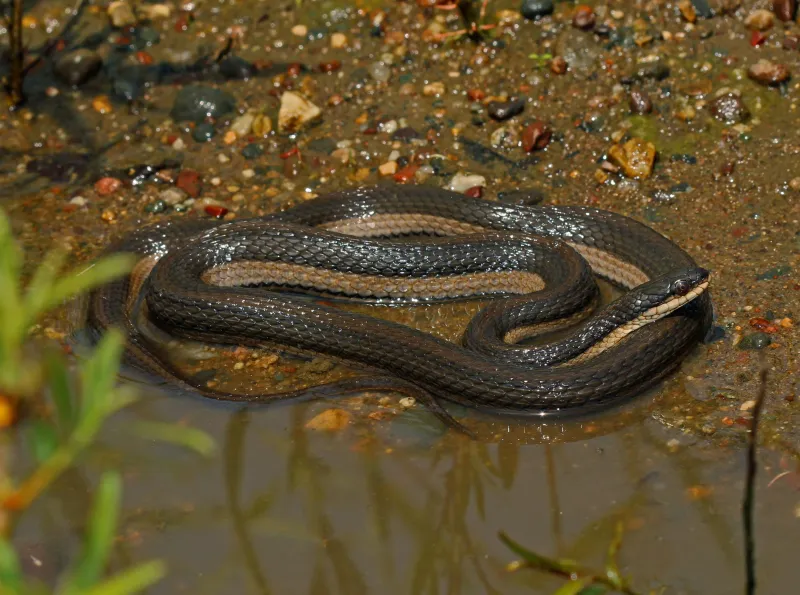
Specializing in hunting freshly-molted crayfish, these aquatic snakes rarely venture far from water’s edge. Their olive-brown bodies feature subtle stripes and a distinctive cream-colored belly with twin rows of half-moon markings.
Limited to southeastern Iowa’s river systems, they’re non-venomous and extremely shy. Most Iowans never encounter these specialized hunters that spend much of their time underwater pursuing crustacean prey.

